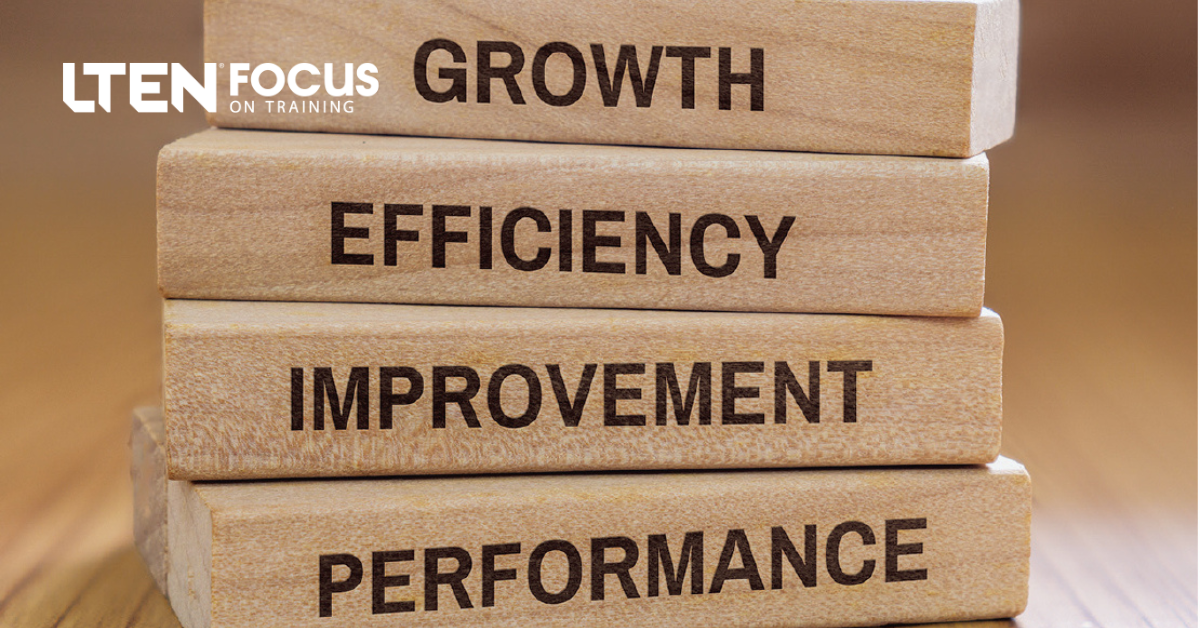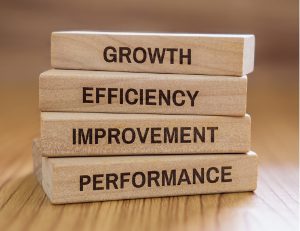
Skills Based Organizations – By Erica Sambraus, Anna Petersen, M.Ed., Adam D. Lewin, MPA, CMR, PMC, and Jessica Knox
SBO practices help training facilitate change
 For decades, organizations have struggled to keep up with demands for upskilling and reskilling their workforces in response to change, both internally and externally. With advances in technology, most recently artificial intelligence (AI), it’s clear to see why data from Boston Consulting Group points to a significant reconfiguration of jobs and the associated skills required by 2030.
For decades, organizations have struggled to keep up with demands for upskilling and reskilling their workforces in response to change, both internally and externally. With advances in technology, most recently artificial intelligence (AI), it’s clear to see why data from Boston Consulting Group points to a significant reconfiguration of jobs and the associated skills required by 2030.
As jobs and skills requirements shift, learning departments play an important role in facilitating change. The learning industry has long relied on a mix of competencies and performance objectives to define “what good looks like.” Recently, however, there’s been a shift in the way that some organizations have been thinking about desired performance, that may help them tackle bigger challenges like workforce planning. They’re adopting the practices of a skills-based organization (SBO).
What Do We Mean by SBO?
Let’s start with what we mean by skills, in particular how they’re different from competencies. Competencies refer to a person’s knowledge skills and behaviors that lead them to be successful. In today’s world, competencies are often role- or function-specific. For example, in pharmaceutical sales, you may have competencies that describe things like territory planning and customer engagement.
Skills, on the other hand, can be a component of what makes up a competency, but tend to focus on a learned ability that is typically more broadly applicable. In keeping with the last example, a skill that supports territory planning is data analysis, and skills that support customer engagement are effective questioning and emotional intelligence.
Many now view skills as the new currency in the labor market. According to Deloitte, an SBO generally does four things:
- Liberates work from the confines of the job by reorganizing work as a portfolio of fluid structures, including and beyond the job.
- Reconceives workers from being employees in jobs to being a “workforce of one” — individuals who work on- or off-balance-sheet, each with a unique ability to make contributions and a portfolio of skills and capabilities that match the work.
- Uses skills, rather than jobs, to make decisions about work and the workforce — from who performs what work, to performance management to rewards to hiring.
- Builds a “skills hub,” an engine of skills data, technology, governance and more, to power these decisions.
The Benefits of Becoming an SBO
Talented employees want to continually grow the skills and talents they possess while learning new and exciting skills that align with their career goals and the business imperatives of their organization. There are a lot of skills relied upon a generation ago to move one through the hierarchy of the company that are no longer as useful.
Technology is constantly evolving, needed talents are always changing. To adapt to these realities, many businesses are moving away from a resource-based or even competency-based philosophy to a skills-based approach. By adopting a skills-based approach, organizations can ostensibly be able to respond to business and environmental change more quickly – for example, the rise of AI –and also recognize the shift in worker priorities and goals.
In addition to agility, Deloitte noted: “Organizations that embed a skills-based approach are 63% more likely to achieve results.” Results include a richer talent pool internally, retainment of top employees and building a workforce that matches the current and future needs of the company.
In the case of life sciences sales teams, increasing the focus on skills allows for harmonized expectations from customer-facing associates across therapeutic areas, and the implementation of consistent values for success — enabling sales associates to broaden their exposure, knowledge, competencies and skill sets across therapeutic areas.
The newly defined capabilities of the role will empower sales associates to leverage their talent and experience to create greater opportunities for developing new skills, growing their networks and making a larger impact on the success of the business. The identified skills should be those that will help sales associates be even more successful in the future and allow for increased engagement with customers, ultimately resulting in greater impact for patients.
Example in Practice: Sanofi
The specialty care team at Sanofi has begun an exploration into what skill-based means to its workflows and its employees and uncovered some of the data outlining the benefits mentioned above. Furthermore, Sanofi recognized that employees want to grow in their jobs and know they are developing applicable skills for their next position.
They are now approaching the initial stages of preparing for the shift to an SBO. This demands extensive study among employees, leadership, external industry experts and similarly led pharmaceutical organizations. For example, reviewing the competencies in place and understanding the associated skills provides an idea of the depth and breadth of skill inventory already in place.
Workday, for example, has hundreds of skills in their system that can be aligned with job roles, groups and individuals. However, the number of skills available in the system can be overwhelming to manage. Auditing critical job responsibilities, associated skills and proficiency levels is an important step in building a blueprint for aligning skills to job role and function.
Example in Practice: Novartis
Novartis is one of the first of a growing number of companies currently evolving the role of the sales associate. These evolved roles will focus on the skills the organization believes will empower customer-facing associates to deliver on the values most important for success.
Novartis has enhanced its field force competencies to reflect an increased emphasis on skills, specific skills the research suggests will drive success now and in the future. These evolved skills were recently introduced along with supportive training. Some of the biggest challenges have been developing applicable training for all therapeutic areas and incorporating the upskilling and necessary learning time into existing business priorities. Alignment across leadership at all levels has been and will continue to be critical.
In addition to evolving the role of the sales associate, they are also addressing the need to upskill their first-line managers to equip them with the necessary tools and skills to coach in this environment.
Associated Challenges
To move at an enterprise level to an SBO model requires substantial investment of time and resources. It is typically associated with a transformation roadmap of three to five years. The change effort is also critical to realizing such a significant investment.
And while the full benefit of an SBO approach requires scale, starting with sales or even the commercial function, or perhaps even leveraging some of the concepts to approach people development in a more agile way, may be more appropriate as a starting point. Given that sales have shifted from a purely face-to-face model pre-pandemic to purely virtual during the pandemic, now may be the most opportune time for this investment as sales is readjusting to a post-pandemic hybrid world.
Looking Forward: The Opportunity
With the rise in popularity of skills-based approaches, technology platforms that are based on skills models and offer talent marketplaces, upskilling and more are growing rapidly. And while time will tell in terms of whether organizations can overcome the challenges described above and realize the full benefits of this approach, the strategy of connecting skills to talent development and performance is valuable regardless.
Life sciences organizations looking to differentiate themselves in the current ever-changing, challenging environment need to identify forward-thinking ways to strengthen their workforces to grow their business, improve their ability to impact their customers and provide individual opportunities for growth.
How are companies identifying the capabilities that will enable future success? A customer orientated lens is critical, as are internal and external analyses. Companies are looking internally to their highest performers, and identifying those competencies that are driving their success. And they are conducting external analyses to understand how other companies are enhancing the skills of their workforces, striving to achieve a competitive advantage by staying at the forefront and future-proofing their approach.
Like all major change initiatives, middle managers are critical in a successful implementation, and they should be engaged accordingly. In the case of field sales, first-line managers need to not only develop these skills, but identify representatives’ strengths and areas of development, both in-role and toward the next role. They also need to be able to manage the needs of the team both administratively and in terms of performance with the limited field time to devote to each representative.
To support this evolution, organizations are doubling down on skills-based training. Critical success factors to taking a skills-based approach include an individualized approach, a deep understanding of the capabilities and expectations, a company-wide investment in development and multi-pronged varied-modality learning journeys geared toward the modern learner, delivered over time.
This can take significant resources. To support upskilling and re-skilling, learning experiences and content that do not fully reflect the skill in demand should be eliminated or modified. Realignment of learning strategies and content with appropriate skill tagging is another part of the puzzle that is critical for success. Moreover, employees are strapped for time, causing a distinct need for development that is individualized to maximize the time spent learning. In the early stages, it is most important to correctly categorize development opportunities to create engaging, relevant and clear knowledge transfer to the employees.
Conclusion
The role of the skills trainer is more critical now than ever. Associates should be more involved and invested in their own development with leaders guiding them on their journey. Leaders will have greater accountability for supporting, empowering and motivating their teams to continually meet and exceed customer expectations.



 Erica Sambraus, erica.sambraus@novartis.com, is associate director, omnichannel engagement skills, Novartis. Anna Petersen, M.Ed., anna.petersen@sanofi.com, is associate director, learning & development, Sanofi Specialty Care. Adam D. Lewin, MPA, CMR, PMC, adam.lewin@ashfieldhealthcare.com, is global training director for Ashfield Excellence Academy (now Nazaré) Jessica Knox, jknox@metrixgroup.com, is CEO of Metrix Group.
Erica Sambraus, erica.sambraus@novartis.com, is associate director, omnichannel engagement skills, Novartis. Anna Petersen, M.Ed., anna.petersen@sanofi.com, is associate director, learning & development, Sanofi Specialty Care. Adam D. Lewin, MPA, CMR, PMC, adam.lewin@ashfieldhealthcare.com, is global training director for Ashfield Excellence Academy (now Nazaré) Jessica Knox, jknox@metrixgroup.com, is CEO of Metrix Group.








